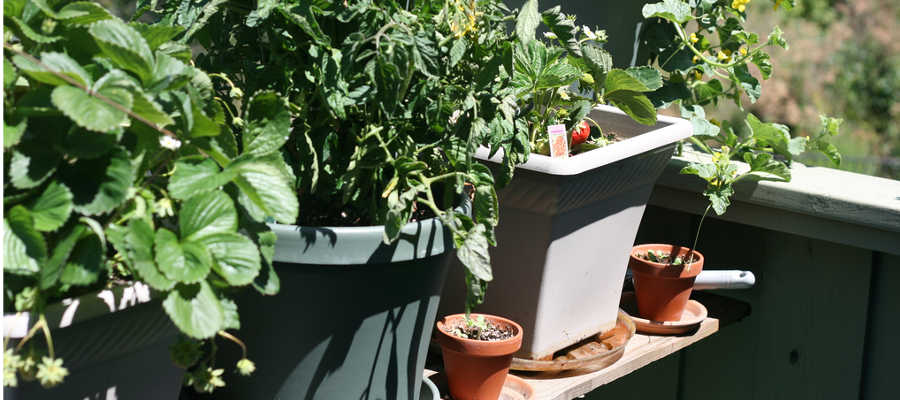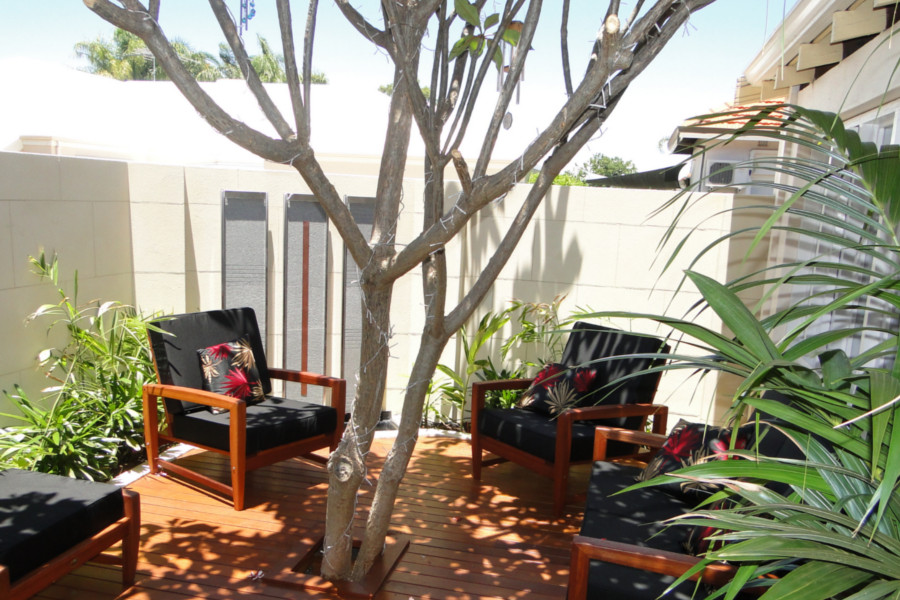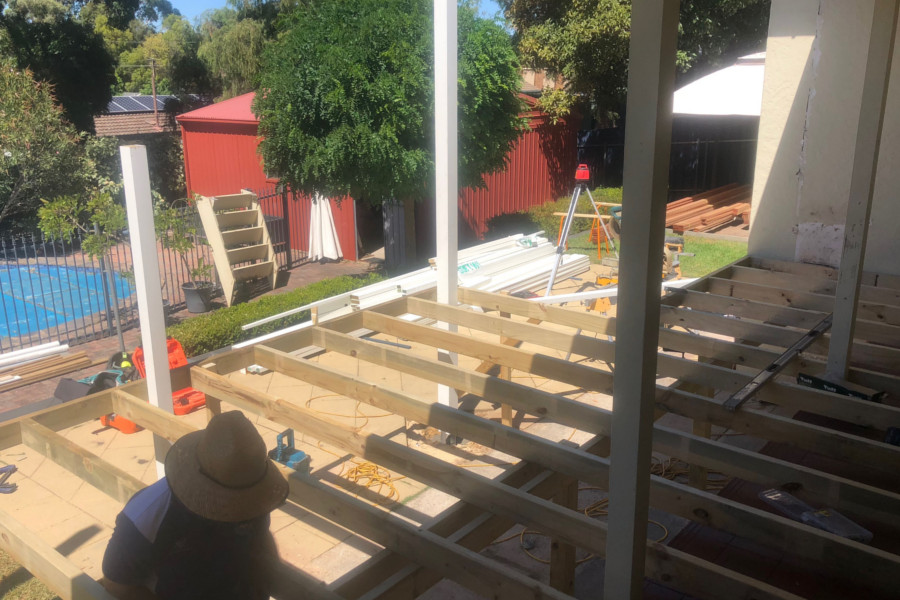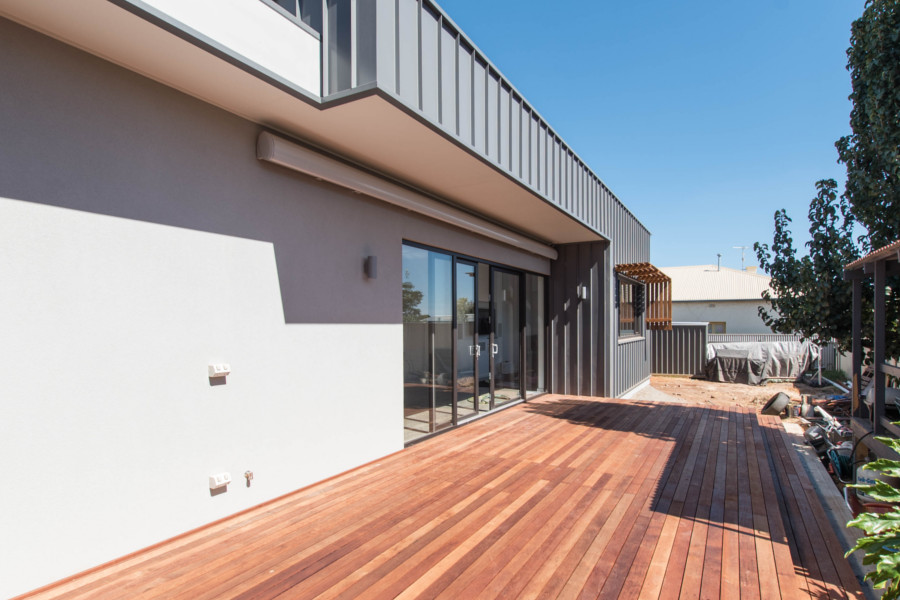
Use Large Containers
Small containers tend to dry out more quickly and will require more frequent watering. So you will want to use the largest container possible. But also consider that when you fill up the container with soil and your plants are finally growing, large containers may be quite heavy and difficult to move around.
Here is a list of vegetable plants and their typical depth requirements:
| Container Depth | Plants |
|
12 cm |
Chives, Lettuce, Radish, Basil, Coriander |
|
17 cm |
Bush Bean, Garlic, Onion, Peas, Mint, Thyme, Asian Greens |
|
22 cm |
Pole Bean, Carrots, Cucumber, Eggplant, Fennel, Leeks, Pepper, Spinach, Parsley, Rosemary |
|
30 cm |
Beetroot, Broccoli, Okra, Potato, Sweet Corn, Summer Squash, Dill, Lemon Grass, Kale, Artichokes, Zucchini, |
The deeper the pot, the more moisture it can store and the less watering you will need to do. If you opt to use a self-watering pot, you can decrease the depth of the planting area and the frequency of watering because a water reservoir right underneath the planting area takes care of this.
Soil
If you’re new to container gardening, your first instinct may be to fill up the container with garden soil. Don’t do it! Garden soil tends to get compacted when placed in a container and this will impede plant growth. The growth medium you need for your container garden needs to be porous enough to provide adequate aeration and drainage but at the same time has to retain the moisture levels your plants need to thrive.
The way to go is to purchase or formulate a suitable potting mix, which typically has particles that are larger than soil, ensuring that your plants are properly aerated and drained, yet still get enough moisture.
Ideal Veggies for Pot Planting
Not all species and varieties take to potted planting. Here are some of the vegetable crops that have proven ideal for container gardening.
Herbs such as basil, parsley, marjoram, thyme and even bay do well in pots. And growing these in containers comes in handy since they are often used as fresh ingredients.
Root vegetables, tubers and bulbs such as beetroot, beans, carrots can be successfully grown in and harvested from containers, but may require deeper pots if you want higher yields or larger vegetables.
Fruit-bearing crops such as tomatoes, eggplants, chillies and capsicum do well when potted. You may need to supplement the soil with lime to prevent the blossoms from rotting.
Leafy greens such as spinach, chinese cabbage, lettuce and bok choi are excellent container plants. You will need bigger containers if you want to plant large crops such as cabbages, broccoli or brussels sprouts.
Zucchinis, bush pumpkin and squash also grow well in pots, but you need to use containers at least 40cm deep.
Water and Sunlight
Vegetables love lots of water but potted plants tend to dry out more quickly than those planted in soil. Pots and containers store relatively less moisture and dry out rather quickly. However it is not just a matter of soaking the plants in water; there is an art and science to this. The goal is to keep the rootball moist.
It’s easy enough to fill up the container with water up to its rim. Any excess will drain away through the bottom drain holes. Be aware, though, that when the rootball dries it usually shrinks and pulls away from the sides of the pot, leaving a tiny gap through which water escapes without soaking the root ball. That is why it is a good idea to fill up the pot or container several times to ensure that the rootball is soaked. It is also better to keep the rootball constantly moist, rather than alternate between it being dry and wet. Moisture fluctuation contributes to blossom rot in fruit-bearing plants such as tomatoes. So water everyday to keep your veggies consistently moist.
Some vegetable plants like a lot of sun while others prefer the shade. The requirement differs from plant to plant, of course, so you should be familiar with what each vegetable needs. The advantage of potted plants is that you can move them to where they get optimal sunlight.
Fertiliser
Because the potting mix is more porous than soil, nutrients easily leach out especially when you water frequently. You will need to fertilise more often, at least every two weeks. Choose complete organic fertilisers, preferably liquid or water-soluble. These are the easiest to use and are most effective in getting nutrients down to the roots.



